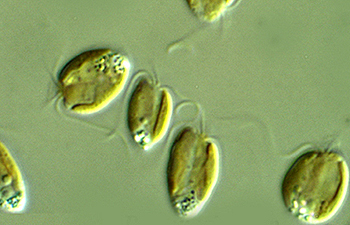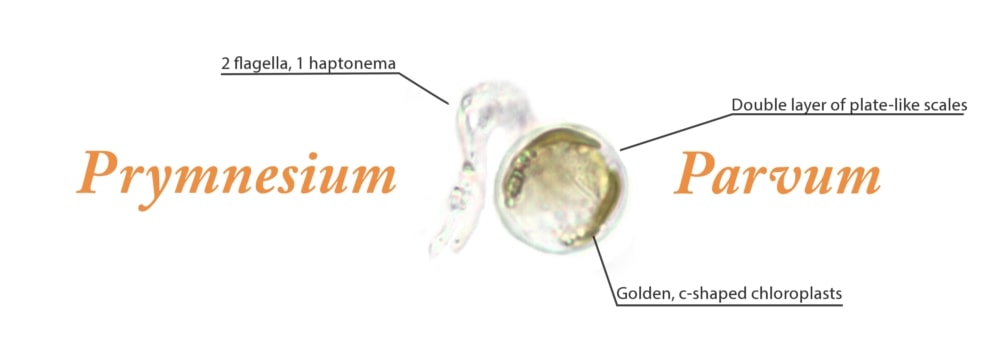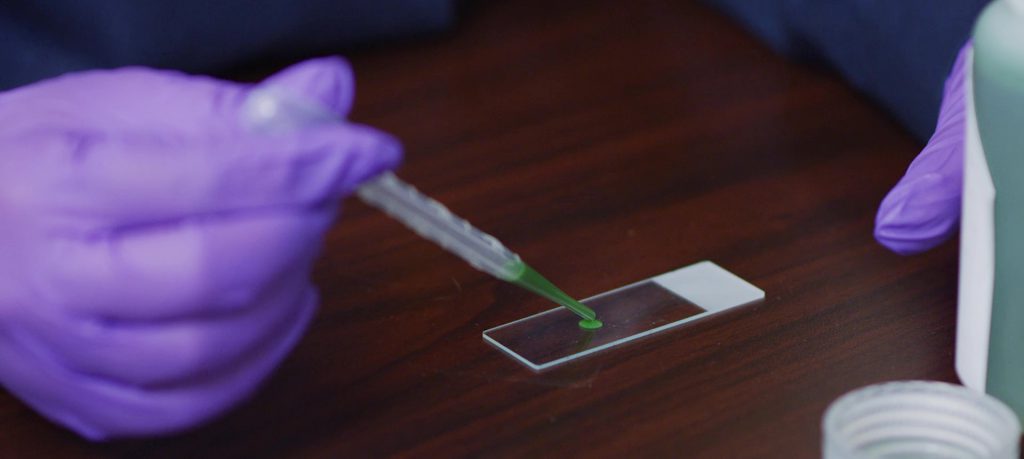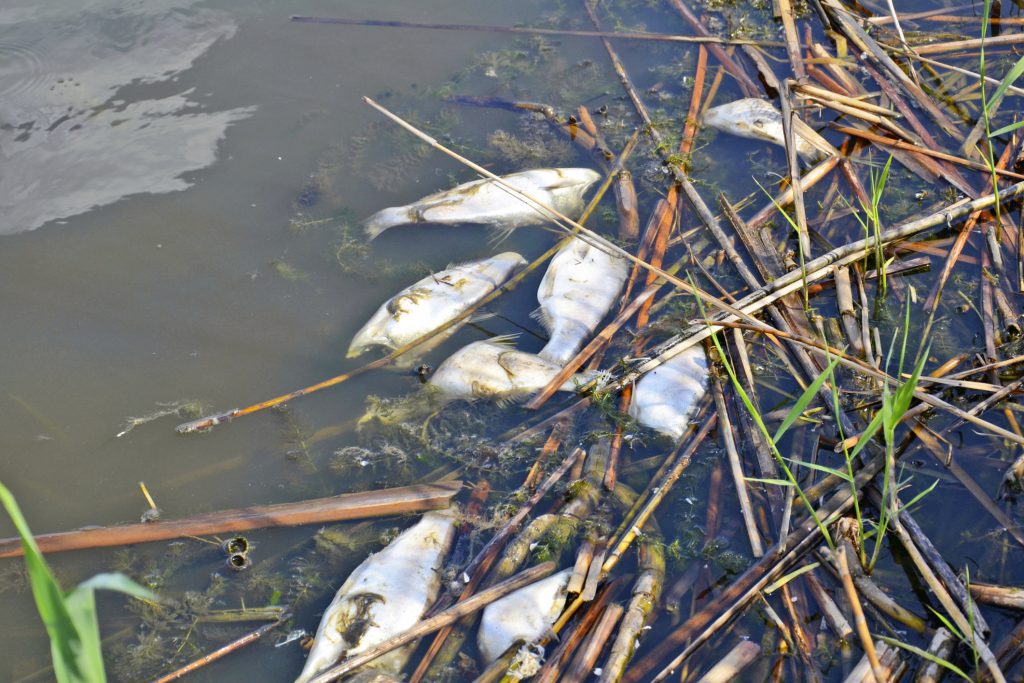
Toxic Golden Algae and Fish Kills
2020 marked the start of my 35th year in the lake management industry. It’s a career that is constantly evolving due to the vast number of variables associated with aquatic ecosystems. Every now and then, a novel and completely unexpected problem or species will appear, requiring the implementation of new and adaptive lake management strategies. One of my strangest encounters occurred about 15 years ago in Arizona when I came across golden algae (Prymnesium parvum) for the first time.
Golden algae occur worldwide, but the first blooms identified in North America were confirmed in Texas in 1985. They arrived in Arizona around 2004 and then eventually appeared in California in 2013. In 2018, golden algae were reported in more than a dozen states!

What Are Golden Algae? Why Are Golden Algae Toxic to Fish?
Golden algae are unicellular organisms found in freshwater lakes, ponds, and rivers. Like the better-known blue-green algae (cyanobacteria), golden algae have the ability to produce a toxin that disrupts respiration in gill-breathing organisms like fish, crayfish, and some amphibians. After exposure to the toxin, gills fail to properly absorb oxygen from the water, causing the species to bleed internally and eventually die from asphyxiation. Over the last few decades, large-scale fish kills have occurred throughout the southwestern United States due to the presence of these toxins. Unlike other types of Harmful Algal Blooms (HABs), however, the toxins produced by golden algae do not appear to have negative effects on other wildlife, livestock, pets, or humans.
Although there have been noted trends that favor or inhibit golden algae reoccurrences, they still remain very unpredictable. Golden algae can be present in an aquatic ecosystem without releasing the toxin—and, mysteriously, it is not known what triggers the toxin to release. Making it even more difficult is the lack of measurable treatment strategies available to fully eradicate this puzzling alga. Once golden algae have been identified in a body of water, they will always have the possibility of returning. Those who have experienced golden algae for the first time usually notice all the fish dying, often without any warning.

How to Get Rid of Golden Algae
Lake management industry leaders have studied golden algae trends since they arrived in North America in the 1980s. While the tools for complete eradication are still being researched, proactive management strategies can be implemented to thwart the unpredictable invaders. In fact, annual lake management programs, which focus on early detection and rapid response, have proven overwhelmingly successful. Rather than attempting to put a band-aid on the problem, custom management plans work to inhibit or reduce the dominance of these toxic species. Each lake community is unique and is evaluated for the best possible lake management plan to fit its needs. A goal of zero fish loss every year is obtainable with the right, consistent plan in place.
Preventative management techniques to strengthen the natural health and balance of the aquatic ecosystem include regular water quality monitoring to ensure water pH, salinity, nutrient levels, and other parameters are within ideal ranges. And as proven through the management of cyanobacteria blooms, nanobubble technology may eventually be identified as an effective solution for eradicating golden algae, though more research and development are required. Finally, educating residents and fishing enthusiasts may go a long way in preventing golden algae blooms, which can spread to new waterbodies through contact with boats and equipment. Therefore, it’s extremely important to rinse fishing poles, tools, and toys before entering new lakes and ponds, as well as refrain from transporting plants and organisms to new ecosystems.
If preventative management plans are not already in place, alternative options are available. SOLitude is experienced in the eradication of golden algae blooms. Depending on the density of a bloom, SOLitude’s aquatic management experts may prescribe the professional application of an EPA-registered aquatic algaecide. Targeted algaecides can quickly eradicate the toxin-producing golden algae present throughout the water column without impacting fish or wildlife. While algaecides are highly effective at minimizing the presence of golden algae and reducing the risk of fish kills, it’s important to always refer to an aquatic management expert and conduct thorough water quality testing before establishing a treatment plan. The presence of other algal species can impact the management approach and may require the exploration of alternate strategies.

Why Should I Care About Golden Algae If They’re Only Toxic to Fish?
What if you aren’t an angler or just don’t care about the health of the fish in your waterbody? Why plan ahead and budget extra for golden algae control? Well, have you ever experienced a fish kill? In addition to the obvious bad odors, complaints, and undesirable clean-up headaches, fish kills can create wildly imbalanced aquatic environments. Fish serve as primary tools for insect and weed control in lakes and stormwater ponds. When golden algae are allowed to thrive in your waterbody, it’s not a question of “if,” but “when” a fish kill will occur. Think of the value of these living tools and plan ahead for early detection and rapid response in protecting one of your biggest amenities.









